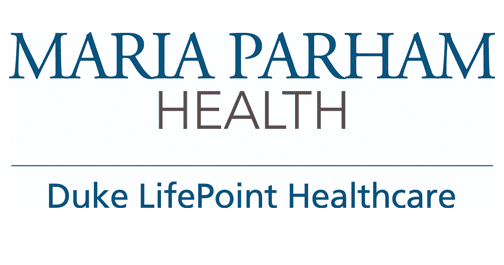People who suffer from peripheral artery disease can experience a range of symptoms, but a physician who specializes in treating patients with PAD said advances in care can shorten recovery time and improve quality of life.
Mohammad Akhter, MD, is an interventional cardiologist and vascular specialist affiliated with Duke Hospital. He has been with Maria Parham Health since the summer and talked with John C. Rose on Tuesday’s Town Talk about some of the causes and symptoms of PAD, as well as some of the things that specialists in his field can do to help patients feel better.
PAD is a condition that happens when plaque builds up in your arteries which restricts blood flow to extremities. In the early stages of PAD, a person may not experience any symptoms, but that changes as the disease progresses unchecked.
It primarily affects the lower legs, Akhter explained. “As the disease progresses, (patients experience) painful cramping in one or both hips or calves, leg numbness or weakness, or coldness in the lower leg or foot.”
People with severe PAD may have open sores or ulcers on their legs or feet that won’t heal because of the restricted circulation.
Until relatively recently, treatment of PAD almost certainly involved surgery. Advances in care such as the care that Akhter provides can include catheterization and placement of balloons and stents to open the arteries.
Patients hear that they have a blockage in their extremities and they think that surgery is the only treatment option. Those with mild or moderate disease, he noted, can get relief through less-invasive catheter techniques, which is Akhter’s specialty. Often, patients can go home that day or the next morning, he said, and face a much shorter recuperation period.
“Seek treatment sooner rather than later,” he advised.
Screening for PAD can be as simple as having a primary care provider take a detailed history, conduct a physical exam and check for pulses in arms and legs. And the use of a Doppler probe can help find pulses that aren’t easily detected, he added.
Medical treatment is part of the care plan, but simply increasing your level of activity through rehabilitation or exercise can also help. The body, Akhter said, will try to adapt to how much you ask of it. “Patients can actually lessen symptoms in weeks or months (after) introducing activity into their lives,” he said. Exercise for 20 to 30 minutes two or three times a week is an “excellent way to treat symptoms of PAD,” Akhter added.
Risk factors like smoking, diabetes, high cholesterol and high blood pressure all contribute to a person’s overall health, so bringing blood sugars and cholesterol down will help as well. “Behavioral changes significantly reduce the progression of the disease.”
Once the disease is advanced, preventative care is less effective, so patients could wind up needing more invasive treatment, including surgery, to address the disease and its effects on the body. Maria Parham offers a full spectrum of diagnostics and therapeutics including arterial ultrasound and a dedicated wound care center.
Akhter moved to Durham in 2018 after beginning his specialized work at Mt. Sinai Hospital in New York and then practicing as a board-certified interventional cardiologist and vascular specialist for about 10 years at St. Elizabeth’s Hospital in Boston.
He completed medical school in his native Pakistan and completed his residency and a fellowship at University of Southern California.
He made his way to Durham to complete a master’s degree in global health, but COVID-19 derailed his plans, for the time being.
“It has been gratifying practicing my skill set here in North Carolina,” he said, adding that although he has been amazed to see disadvantaged populations debilitated by PAD, he also remains hopeful because he can utilize his specialized treatments to improve medical conditions.
He praised his cath lab coworkers at Maria Parham Health for being advocates for patient care and for making his work easier.
“I don’t know what this community would do,” Akhter said, without a hospital that he called a “lifeline” for the area.
Although there’s no cure for PAD, there are treatments and care plans that can help.
Call 800.424.DOCS to find a specialist and schedule an appointment.
(Maria Parham Health is an advertising client of WIZS. This is not a paid ad.)
Click Play
